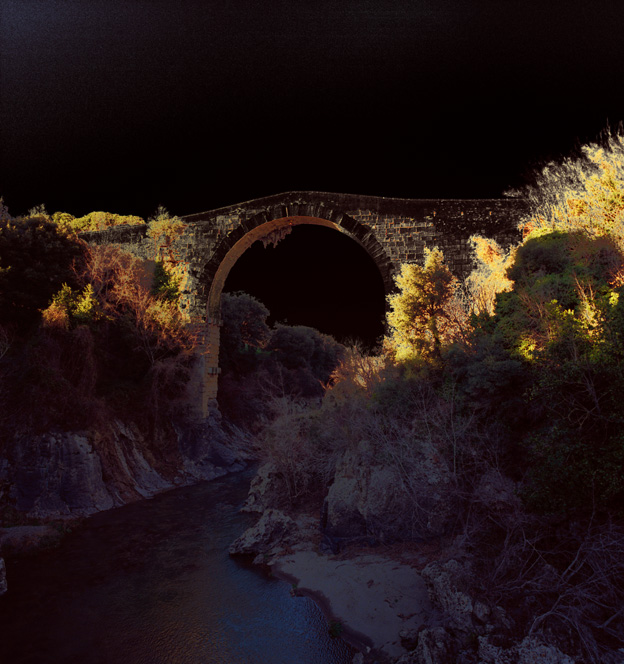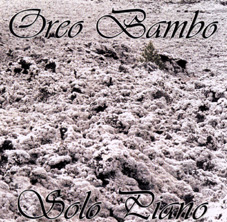|
Oreobambo
|
|
Solo Piano
|
|
Music Composed and Performed by Oreobambo
#7 Cyclops and #8 Harpacticus Composed and Performed by Grea Lumberg and Oreobambo Inspired by Crustaceans |
|
EM Productions 1999
|
|
Total Length 48':50''
|
Copyright ©1999 Oreobambo
"Pure music, the purest I know. No room for styles, schools or influences of any kind. A mirror reflecting nothing, and this is all so beautiful.
What happens to me while I listen is that I find myself following that sound and don't know where it may take me, don't know where I am going or where I am, but all is so pure and profound that I am fascinated. No more familiar routes, no more musical thought as I know it, as is usually taught and is, however, used and abused in the usual ways: the only image that pops out is the sea of the abstract, and I stay as in a dream.
Oreobambo's Solo Piano surely is one of the clearest and purest moments in the magma of those I happen to walk through."
Matteo della Rovere, 1999
"Paranaspides, Anaspides, Nebalia, Balanus ... a collection of brief musical masterpieces for piano by Oreobambo.
We encounter musical references in this work that stretch across the entire history of western music. From the graceful harpsichord of Cimarosa to the crystalline cascade of the sounds of Debussy; from mozartian brilliance to the percussive valence of Bartok. Each of these references, however, is more like a re-elaboration on the part of the listener rather than a real intention of the artist and contributes towards creating a particular sensation that can be compared to that which one feels when looking at the apparently unreal image printed on the cover of the CD Solo Piano, or when reading the names of the various species of crustaceans that make up the titles of the sixteen tracks. Each element contributes towards creating this sensation of estrangement from reality, not by pursuing mystical trancendence, but by veering towards a completly different reality.
The aforementioned musical pieces frequently undergo variations in which the insistently repeated bass notes provide the background for an expansion of improvisation in the higher ranges. The intensity builds up abruptly into a flowing rhythm that explores the extreme limits of musical tension.
All of the pieces (with the exception of Laura) give expression to a bipolarity of tension between two repetitive melodic lines that support, respond and reinforce each other in their respective processes of exploration; one on the lower and the other on the higher register of the musical scale. This tension is expressed even more clearly in the two pieces played together with Grea Lumberg, a composer who shares Oreobambo’s innate sense of improvisation and profound desire to go beyond the traditional parametres of musical experience. A deliberate sense of accord is never clearly expressed and the unusual harmonic development is unchained by the freedom of exploration and the juxtaposition of the two melodic lines.
The pieces are a succession of brief, incisive musical ideas, each of them unique, so that it is not symmetry but freedom that becomes the fundamental precept of this musical work. This musical freedom, however, while permeating the entire collection of pieces, manages not to degenerate into total asymmetry. Thus we find, even if only sporadically, melodic discourses that can be described as purely symmetrical and indeed even entire pieces with a formal order that approaches that of classical musical forms. Paranaspides, for example, is reminiscent of a “theme with variations” form of mozartian melodic design. Asymmetrical rhythms of an improvisational character frequently appear, and paricularly in the final closing pieces, these seem to give expression to a primordial dimension which is evidenced in various sections by the percussive valence of the piano.
Despite a complete autonomy from the rules of classical harmony, these rules are never brutally broken, but rather are elaborated upon through a personal and spontaneous eclecticism that does not even disdain incorporating influences of oriental modal systems, as in Bivicta.
In general, Oreobambo reserves the freedom to follow or ignore the codified canons of traditional music and he permeates each piece with a calibrated non-equilibrium. Each note is pervaded by a playful spirit; a pure vitality that achieves all that music can offer without emulating or opposing formulaic forms, but simply with a free, intimate and original elaboration of all that can be defined as music."
Susanna Capocci, 1999
 |
Buy from EM Productions Online Store
Acquistare su EM Productions Online Store
|
|
| ColourfulTone® |

Oreobambo Web Site
Music: Web Licence SIAE n. 2869 /I/ 2806
All Photographs and Music Copyright ©1996/2024 Oreobambo
Web site design and information - Copyright ©1996/2024 EM Productions
All rights reserved. Reproduction in whole or in part is strictly prohibited without express written permission of the copyright holders.







